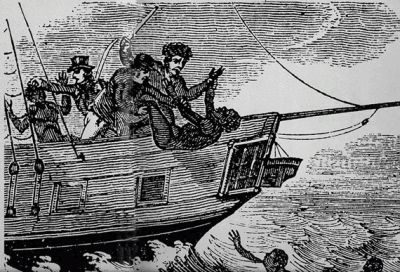Hi all, although this event took place a little while ago, I feel it is necessary to discuss! I attended Sapphire’s reading on April 4th, in Jacobus Lounge.
Walking into this event, I did not know what to expect. I knew of Sapphire and her talents, but was unaware of her powerful voice and strength. For those of you who don’t know, Sapphire is the author of 2 best selling novels, Push and The Kid. Push was adapted into Precious, the movie, which received 2 academy awards. Her work is well known world-wide, as it has been translated into at least 13 languages. Her voice is a prominent one in literature, but it’s also well needed, as she gives voice to the people that are set aside to be invisible. She never holds back in her writing. Her work is so intimate, as her characters draw us in to their realities. Sapphire urges us to look at the harsh truths experienced. Sapphires voice is moving, with the ability to affect all who reads. Her voice is crucial. She pushes us to examine our own ideas and preconceptions, so we’re left with the heavy emotions she evokes in us within her writing. Simply put. Sapphire is a captivating writer, and speaker. You cannot help but keep every ounce of your attention on her as she reads. Watching her speak is like witnessing the pain she has seen and experienced within others all over again. I recall her slamming her fists on the podium, just ready to burst. I can honestly say that I am so grateful to have experienced this power up close in personal, and I am lucky that Cortland granted me this experience. If you were unable to attend, I strongly suggest you buy her novels, so you can experience some of this power as well.
I would like to focus on her reading of “Speaker Of The House.” The poem is not necessarily about Dennis Hassett (the longest speaker of the house) but refers to him multiple times. For those of you who don’t know, Hasset went to prison for sexually abusing the young boys that had been entrusted in his care when he was a wrestling coach. This poem is for the victims of this abuse, who were greatly affected by Dennis Hassett. The poem evokes a great amount of anger within me, as it discusses how the abuse impacted the abused boys. Sapphire takes the persona of these young boys, saying that they feel “I’m nothing, watching you on T.V…” These boys are left broken as this man continued to have power of them and their bodies, years after the abuse stopped. One victim in particular was unable to get job, left broken over the abuse. Unfortunately, this is the harsh reality that victims of sexual abuse face every day.
Another important message I gained from Sapphire’s reading/ Q&A was to read and write every single day. When asked how she found time to write, Sapphire expressed that no matter what, or how busy she gets, she finds time to write. Now unfortunately, I have never been able to section out a specific time to focus on my writing. However, since this reading, I have been writing at night before bed, whether it be a simple poem about the day or how I’m feeling, or my thoughts compiled in to a few pages of my journal! I’ve found that if you make a priority, it will get done!
Overall, I cannot express how happy I am to have experienced the strength of Sapphire. During this reading, Sapphire was the “speaker of the house,” and had her audience captivated throughout.
Thank you for taking the time to read my post!






